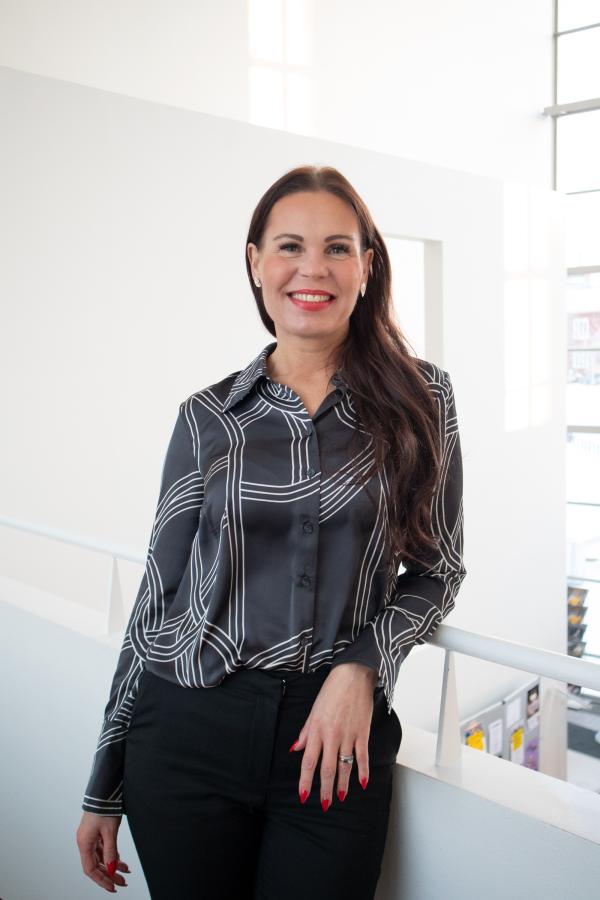Dissertation: Joint roadmaps and the research, development and innovation platforms advance the development of active distribution networks

In her dissertation, Katja Sirviö has developed a method for creating a socio-technical roadmap with its tools from power grid visions to a practical level.
– I found the socio-technical development and dynamics of the electricity distribution network interesting; the development and interaction of the distribution network and the customer. In order to reach a practical level, I used Sundom Smart Grid pilot in Vaasa as a special case study, says Sirviö.
A particular challenge is that electricity distribution networks are different and may have different operational objectives in the future. For example, the operational goal of the energy community’s own microgrid may be self-sufficiency in energy use and minimisation of costs. This goal is economic, but can also be social or environmental. The operational objective of the microgrid managed by the distribution system operator may be to avoid congestion of the distribution system. This goal is primarily technological. In both cases, the required functionalities are achieved by the control of distributed energy resources, for example, the generation unit, the load or the battery storage.
– The challenge posed by distributed energy resource units in managing the distribution network is that multiple actors from different locations can actively control the units with different functions. As a result, the predictability of network operation deteriorates and equipment functionality requirements become more complex. Therefore, the development paths of different networks, network functions and combinations of functions must be modelled and tested with appropriate scenarios, Sirviö explains.
In the sustainable development of smart grids, especially electricity distribution networks, various stakeholders should be involved in defining the evolution path. Creating a common roadmap and bringing together different stakeholders and actors on a shared research platform will increase learning across disciplines holistically and make new product development more successful.
Digital twins and advanced testing methods facilitate the implementation of active distribution network concepts
Active electricity distribution networks and microgrids can be described as a system of systems. Interoperability between different systems is mandatory, so standardization is critical when developing a multi-vendor system. According to Sirviö the standardisation of microgrids, especially their management system testing, is still developing.
– Despite this, various solutions are becoming more common. One concern is how to take advantage of and map out developing standardization, different requirements, and test cases as the microgrid concept is commercialised and applied to different applications. The challenge for vendor-defined solutions may be that they may not meet interoperability and network requirements.
The interactions of ancillary services in the system need to be analysed
Recently, various real-time simulation and testing platforms have proven their benefits in RDI. These platforms as well as testing methods (digital twins and hardware-in-the-loop testing methods) need to be developed to verify new solutions. For example, especially when integrating several and different ancillary services, the interactions and network effects of the controls of distributed energy resources need to be assessed.
– Central to the development of electricity distribution networks is the ancillary services provided by various distributed energy resources and customers. For example, for the reactive power of a customer’s solar power plant, the grid code requirement can be given by the distribution network company and, on the other hand, the customer’s load can be controlled on the basis of market prices. In this case, the equipment of the same customer can be controlled on behalf of different actors, in which case an understanding of the interactions between the controls must be obtained. For this reason, I developed a real-time simulation and testing platform for testing the control functions and the interactions of ancillary services, as well as a method for accelerating long-term case studies, says Sirviö.
Roadmap textbook
Sirviö’s thesis contains various perspectives from conceptual theories to highly technical content, including transition and innovation theories to power system simulations and testing. The thesis leads to an interdisciplinary understanding of the development of the electricity distribution network with clear case studies and uses case implementations. One could say that the thesis is an example of what a socio-technical roadmap for the evolution of a system should look like.
Doctoral dissertation
Sirviö, Katja (2021) The Evolution and Active Management of the Future Electricity Distribution Networks Providing Ancillary Services. Acta Wasaensia 475. Väitöskirja. Doctoral dissertation. Vaasan yliopisto. University of Vaasa.
Publication pdf: http://urn.fi/URN:ISBN:978-952-476-995-2
Public defence
The public examination of DI Katja Sirviö’s doctoral dissertation "The Evolution and Active Management of the Future Electricity Distribution Networks Providing Ancillary Services" will be held on Friday 17 December at 12 at the University of Vaasa (Auditorium Nissi).
Participation in the event is possible also online: https://uwasa.zoom.us/j/68385810394?pwd=NVpXS3FBUTNSaC9GVHFZaHV5cnpodz09 Password: 380638
Prof. Pierluigi Siano (University of Salerno) will act as an opponent and Prof. Kimmo Kauhaniemi as custos.
At all public events held indoors at the university, such as public examinations of doctoral dissertations, a COVID-19 passport is required of outside participants over the age of 16. This does not apply to our staff. Read further instructions on the university's website.
Further information
Katja Sirviö, tel +358 50 443 5445, katja.sirvio (@) uwasa.fi
